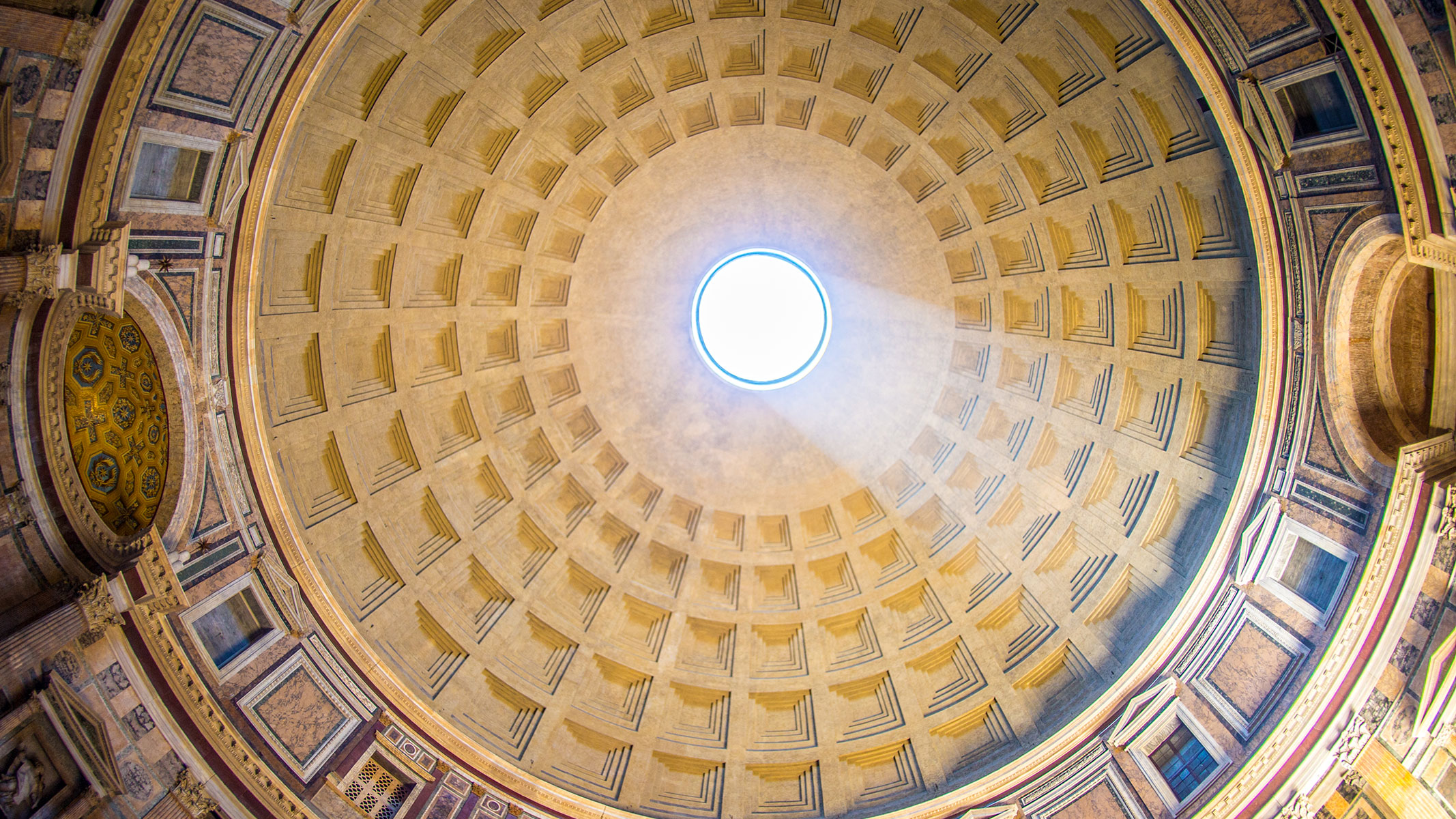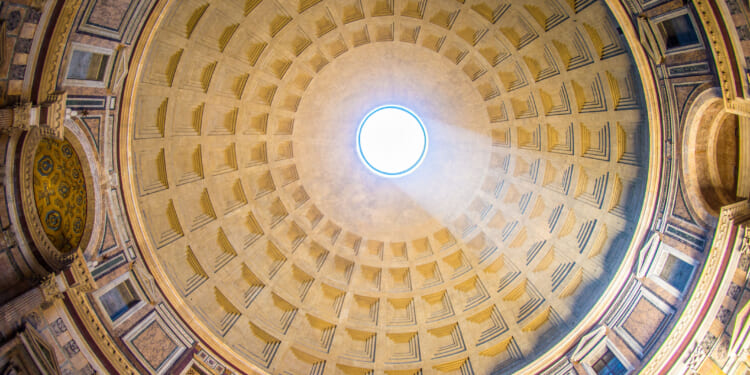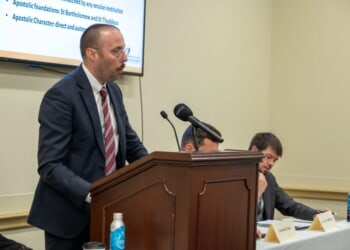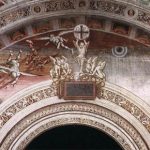
James Hankins and Allen Guelzo join Brian Anderson to discuss their new book project, The Golden Thread: The History of the Western Tradition.
Finally, a reason to check your email.
Sign up for our free newsletter today.
Audio Transcript
Brian Anderson: Welcome back to the 10 Blocks Podcast. I’m Brian Anderson, the editor of City Journal. Today we’re joined by professors James Hankins and Allen Guelzo. James is a professor of history at Harvard University where he teaches western intellectual history, classical tradition, and the Italian Renaissance. He’s the author of a number of books including the prize-winning Virtue Politics: Soulcraft and State Craft in Renaissance Italy. Allen Guelzo, who’s familiar to City Journal readers, he’s written for us before. He’s professor of humanities in the Hamilton School of Classical and Civic Education at the University of Florida. That’s a new position for him. He was formerly professor in the James Madison Program at Princeton. He’s the bestselling author most recently of Our Ancient Faith: Lincoln Democracy and the American Experiment, and he’s a three-time winner of the Lincoln Prize. Today though they’re here to discuss their remarkable newly released book project called The Golden Thread: The History of the Western Tradition. Volume One: the Ancient World and Christendom has just been released with Volume Two: The Modern and Contemporary West forthcoming. Welcome gentlemen. Very glad to have you on 10 blocks.
Allen C. Guelzo: Thank you, Brian. Very good to see you virtually.
Brian Anderson: Let’s start basically with the origin and design of the project. So what inspired the creation of The Golden Thread Initiative as you’re calling it, and how did you decide to split the initial effort between these two volumes in terms of the historical markers, one on the ancient and medieval world and then the other on the modern and contemporary West, and when should readers expect volume two?
James Hankins: We were asked to do the project by Roger Kimball and Encounter Books and it was a project that followed on the book by Bill McClay, Wilfred McClay, Land of Hope, which was intended as a history of America that would be balanced, would replace some of the more anti-American and more uncivilized approaches to American history.
Allen C. Guelzo: Well, I’m just going to say I like to call them historical pessimists. Pessimists in what is admittedly a pessimistic age, a critical age, but still pessimists. That’s the way a great many people who are teaching and writing American history today have talked about the American past. Bill McClay’s book points in a significantly more optimistic direction, and it was Bill’s book and the remarkable success that accompanied it, the demand for it simply leapt off the table. We looked at each other, we looked at Roger, and more or less came to the conclusion that, alright, there’s a great American history survey. Perhaps we should now think in larger terms about a survey of the history of the West, especially in cultural, literary, philosophical and artistic terms.
Brian Anderson: Let me emphasize, I’ve got volume one sitting on my lap here. It is a massive, gorgeously designed book with color plates and beautiful art reproductions, timelines, maps, maps everywhere, and it’s very, very useful to the reader to be able to guide themselves through the historical narrative to have these visual reference prints. I guess it’s an obvious answer. You divided up the West’s history into two big chunks. Right?
Allen C. Guelzo: Well Jim’s long suit is ancient to Renaissance. Mine by comparison picks up where he leaves off. You might say that his tail end happens with Marsilio Ficino and Pietro Pomponazzi and perhaps even the Medici, whereas I am going to pick up very shortly after that with Martin Luther and move forward to the present.
Brian Anderson: So the cutoff point is basically right up to now for the second volume?
Allen C. Guelzo: Yes, the second volume will end with events of 1991, largely because what we wanted to write was history rather than current events. Who knows? But that perhaps a few years down the road, a fresh edition will give us an opportunity to add on a few more years’ worth of narrative after 1991.
Brian Anderson: When is the second volume coming? It’s imminent.
Allen C. Guelzo: I am told by Encounter Books that the date we can expect it to land on the carrier should be early October. I have to admit, I am still reading proofs. We’re over halfway with reading the proofs. As soon as the proof reading has been completed, then they’ll move right away to production. And again, I’m being told that this will happen early in October. By then, we will have both volumes one and volume two and they are of more or less the same dimensions. So if you, Brian, if you think it’s heavy in your lap right now with volume one, just imagine what it’s going to be like with two volumes of The Golden Thread.
Brian Anderson: I haven’t weighed it, but it feels like it must be eight pounds, something along those lines.
Allen C. Guelzo: We do have to get through 4,000 years.
Brian Anderson: You divided up the work here and I’m curious just from the standpoint of how you proceeded, I mean it’s credited to both of you, but James, I gather you took care of, as Allen said, the first part and Allen volume two, but did you collaborate throughout the whole process or really did you just divide it up into separate…
Allen C. Guelzo: Brian, we have been doing this for about the past 50 years. Every time we’ve been together and we started, I have to say in school, middle school, high school, every time we’ve been together and we’ve been together more times than I can easily number, it would be exponential. These are the issues we talk about and whether it’s modern ideas, whether it’s ancient ideas, whether it’s Latin, whether it’s German, whether it’s no matter what, these are things we have talked about, everything I have to suppose from Bartok all the way to Nietzsche and beyond. Maybe we could say that it’s Aristotle to Zarathustra and make it A to Z.
Brian Anderson: So you two have known each other for a long time?
Allen C. Guelzo: Oh yes. I don’t know how he’s put up with me, but all right, yes, a long time.
Brian Anderson: I’m curious though about how the visual aspect of the book was handled as well. Did you bring in external designers from the publisher here? Did you guys decide which maps? Artistic reproductions in this first volume are just extraordinary, beautiful, beautiful paintings of key moments and period of time you’re covering. How was that done?
James Hankins: Well, we had a lot of help from Encounter Books. I chose most of the illustrations and then we found out from the rights people how many of them we could actually use and at that point a negotiation started. We had a lot of help from the rights person. I hadn’t realized how difficult problems it may be to get clearances and everything, over 800 illustrations in the book and most of them are in color. While we had help from Andrew Shea, which was great because he’s much more of an expert on the history of art than my end. Basically it was my initial choice and then it was laid out by the Encounter staff. They did a marvelous job. It’s one of the purposes of having all the illustrations. It’s not simply decorative. The book is about the western tradition and it argues and indeed demonstrates, I think, that all of the people who say there is no such thing as Western civilization and there are quite a few of them are just wrong and they’re ignorant, because there is a tradition in the West, which goes back to the Greeks. It’s been recognized for hundreds of years since the Renaissance. The Greeks and the Romans are ancestors but also medieval Christendom. So we set out to demonstrate that in part visually, as you can find throughout the Western tradition of art, a well unlimited number of thousands upon thousands of artists who have been inspired by Greece and Rome and also by the Christian middle ages and by the Renaissance. Just the view of my parts, the renaissance is particularly rich in images. So I think anyone who just leaps through the volume, they don’t have to read it. They can leaf through the volume and look at the illustrations, look at the texts that we had. They will see that there is such a thing as the Western tradition and also that has been immensely valuable and inspiring Art and literature and music for 3000 years.
Brian Anderson: But it is again to emphasize the beauty of this book. Just extraordinary. I haven’t seen anything quite like it for a while. We live in an age in which the very notion of the Western tradition is contested. Projects like the 1619 project sought to recast American history along explicitly polemical lines and critics often treat classical authors, as the Encounter publisher Roger Kimball puts it, as symbols of “problematic ideologies.” I guess, James, you were starting to say that this really was a motivator for the idea of The Golden Thread as an effort. Speak a bit more about that, and how do you handle the darker realities of Western history as well, warfare, slavery, prejudice while still affirming the fundamental value of the Western inheritance?
James Hankins: Well, like McClay’s book, we don’t shy away from it and there’s quite a lot in my book on slavery, but we try to place them in context to show the reader that there are other civilizations that have been slave societies and in fact Islamic civilization is much more of a slave society than the West is, and also to show that all of the charges that are now made about white supremacy and other silly ideas like that are simply not true. And there are definitely, I think if you compare Western civilization or Chinese civilization for example, there is no question that Western civilization was much more militaristic than the Chinese are, very good at keeping militarism under control, but the West has had a different geographical, geopolitical situation. We, both Chinese and the West, had the same barbarians in many cases attacking their civilization, but the Chinese never had anything like Islamic civilization which challenged the West, in effect, forced it to be militaristic. In the ancient world where it’s the Persians, who were a major military power and Rome could never cease being at least dedicated to the military virtues simply because of the existence of these two major powers on the border. The Chinese did not have this problem a little bit from the Japanese in the 16th century, but basically the Chinese’s main opponents were barbarians much to their north and their west, whereas the West has had a much more challenging environment, geopolitical environment than Chinese and that accounts for why it’s militaristic.
Allen C. Guelzo: We set out to identify certain basic constants in this thing called the Western tradition, and among those constant features are the beauty of literature, the inquiry, the free inquiry into philosophical questions, trying to understand how do we know things, what is really there, how do we pursue truth, how do we define beauty? Alongside that the Western tradition has profound respect and encouragement for science and technology and all of these things then are themselves boundaried by government and law. This is not to say that there have not been moments of ugliness. There certainly have. There have certainly been moments when government and law have seemed to be tossed to the winds by certain individuals and sometimes by certain societies, but at the same time there’s a profound sense of resilience in the western tradition that yes, where these mistakes are made, and Lord knows there’ve been more than a few of them, where these mistakes have been made, it is the Western tradition itself, which reaches a certain point, it says, wait a minute, this is a contradiction in terms of the most fundamental things that we believe and we practice and we are going to deal with this. Sometimes it takes a long time to come to that realization. Slavery is one example. For how long, for was slavery simply a given as a labor system in western societies? Nevertheless, there came a breaking point where the conclusion was this is not compatible what we are calling a civilization and therefore we’re going to have to rid ourselves of it one way or the other. That is unique, that is unique for Western civilization and this cluster of aspects which we try to identify the very beginning of Volume One. This is what sets the Western tradition apart.
One of the things, within, we’re calling this a tradition because strictly speaking there have been a succession of civilizations within that tradition. You start with the Greeks. The Greeks are a civilization. Then we come to the Romans, they are a civilization. Then we come to the civilization of Christendom and the Middle Ages and that is a particular civilization and yet through all of these separate moments of civilization, they’re run these constant features, these constant questions, and that is what makes these civilizations part of this larger picture that we call the Western tradition. Now, I have to say that Jim has had the easy volume to write. Now it might not look it, when it’s 1200 plus pages, but he’s got the easy volume because his volume, I like to say is the volume of how we ascend the mountain and we get to the top of this thing called Western civilization. Whereas my volume, which takes things to modern times is more of the sadder tale of disintegration of challenge in some cases of repudiation, and we have to look candidly at what the repudiation of these values in the Western tradition has given birth to in the last a hundred years. It’s not pretty, but note that it is the repudiation of those civilized virtues that has produced so much of the last centuries agonize and tortures and genocides. It’s not a civilization itself, it is a decay of confidence in that civilization and I think in the largest sense, what Jim and I are trying to do with these books, and I don’t mean this to sound like it’s a two-man crusade, it is to recall people, is to recall its readers, to recall students to what the Western tradition has always been about and to foster and to encourage and to point people towards a reappropriation, a confident reawakening of this Western tradition because the Western tradition has sometimes seemed to go into abeyance and yet it has come back. We move from the Greeks, we move to the Romans, we move on like that, can we come back? Yes, because there is that resilience in the western tradition and this is what we are hoping to appeal to, to describe and to encourage people to embrace.
Brian Anderson: You talk about the decay of this tradition or its kind of internal corruption over the last 100 years. What is that rooted in and is it an outgrowth in your view of the enlightenment or is it a rejection of the enlightenment? Where of these problems?
Allen C. Guelzo: Well, this is a complicated story and I want to say read the book, but of course it’s not available yet as Volume Two. But if I can put it into a very short compass, we take the year 1500 as our break between both volumes. What happens in the year after 1500? What happens in really what is the next 200 years? You have first of all a great shattering of a principle institution of western civilization, which is the church, and there is a crack, there is a split there and it is a serious one. Alongside that you have a scientific revolution, and this is what occupies our description of the 17th century that asks us not to look to the past but to look to immediate experience as a verifier of truth. When we have taken those steps that can go in one of two directions that can either go further up or it can be taken further down and in some respects and in some places, both paths have been taken by the time we get to the 20th century, what we are dealing with is a serious and conscious repudiation of the things that we associate with the Western tradition, and some people want to say, well, is that because of the enlightenment? I am inclined to say that. Is it because of responses to the enlightenment there? I’m inclined to say yes, and that’s what we try to sketch out in volume.
Brian Anderson: The audience for this book is the intended audience, families who are homeschooling or is this aimed at college classes? How do you see the adoption of this book? You had mentioned Bill McClays volume earlier. That book did very well among both of those groups, home schoolers, but also certain classrooms started adopting on the university level. What is the audience that you’re aiming in here?
James Hankins: Well, we’ve been looking at the classical school movement above all. The classical school movement is about two thirds Christian and Jewish, well more Christian than anything, and one third charters, that is public schools that have adopted a classical curriculum, so that’s the fundamental audience in high school. Colleges, we were asked actually to write it for colleges. Later on they decided we should also write for juniors and seniors in high school, but it certainly can be used by colleges. I don’t think it will be used by most American colleges just because they’re hostile to Western civ, but there will be some probably religious schools and more conservative schools like Hillsdale, Grove City College that will use it. We also wrote actually to appeal to adult readers. In fact, it’s written really for adults in a way that challenges high school schools to acquire an adult vocabulary in the adult way of thinking about this grief.
But we think there are many people out there who are sorry, they never had the chance to take a western course. Western Civic were abolished basically 40 years ago and we can see the results all around us of not educating people in our civilization. So I think many people wish that they had had such a course or really are just curious. They’ve been to, read literature in a disconnected way. They’ve been to museums. They’re aware that there are western traditions. They walk around and see the buildings all around them, the author of architecture and classical architecture and baroque architecture. They wonder about the origins of those things. So we try to provide a historical context for understanding the art, the literature, and the music of the West. Allen’s book in particular is a very rich, Allen is a musical historian among other things, and I do a little bit of musical history too on the side, so we’re interested in people understanding the birth of various arts and their development. I have long sections on gothic architecture and Romanesque architecture and classical architecture, so we hope that people will not just get a narrative of politics and religion and intellectual narrative, but also the understanding of the cultural traditions of the West.
Brian Anderson: Allen, do you have anything to add to that? That’s a very nice summation. The kind of book I just, again, so impressed to see and just wish this on high school seniors, and most college students would benefit from this kind of education.
Allen C. Guelzo: I think in the most general sense, Brian, what we’ve had to do are upper division high schoolers, 11th, 12th graders and first year college students. Although that boundary is not drawn with any kind of absolute, it’s not reinforced with concrete. These are the kind of books that would I think be certainly amenable to courses that range far beyond those particular boundary lines. What we do believe there is a market for these books lies in the direction of the kinds of classical schools that Jim is describing, also to the homeschool movement, which is, I mean both the classical school movement and the homeschool movement have taken off in nine leading bounds, especially since COVID and there is a real need, a real absence of the kinds of history material available to these constituents. Now we’re trying to fill that need. Obviously Bill McClay filled that need in terms of American history and ours is the correspondence to that and we might say we even have a few dogs of our own in a race, all eight grandchildren of mine have been homeschooled or else they’ve been in some aspect of private education. I anticipate that each and every one of them are going to have to slog their way through The Golden Thread whether they like it or not, because they have to please their grandfather among other things.
These are going to be books that I think yes, they’re going to be used for schooling among those groups, but I think they’re also the kinds of books that anybody can pull down off a shelf and leaf through and find something interesting because yes, both books have a basic narrative that flows through approximately 10 chapters in each book, but there are also interspersed among the narrative sections are separate. You might call them miniature sections, the publisher called them threads, but these would be two or three pages on a particular specific topic. For instance, I write threads on Claudio Monteverdi. I write one thread on Brahms, Tchaikovsky, and Wagner. Maybe I’m tipping my hand a bit. I don’t like Wagner. I love Brahms and I admire Tchaikovsky and all I can say is if you don’t like that, well deal with it. That’s where I get to exercise a little bit of my own privilege. But it’s funny in both of these books, as big as they are, yes, they’re very big. There’s so much that we wish we could extend ourselves to so much more we’d like to bring in, but we can’t and we’ve had to make the best choices by our own lights. I will say that in Volume Two, you will meet some interesting people. You’ll meet Blaise Pascal, you will meet, one section devoted, an entire sub-chapter devoted to J.S. Bach. You will meet Robert Owen and New Harmony, Indiana as fabled experiment there. You’ll meet a thread on, believe it or not, the Titanic. Yes, all of those specific miniature subjects are there as well, so anybody could read it. Anybody could pick these down off the shelf and find something enjoyable to immerse themselves in for a short while.
Brian Anderson: Looking ahead as a final question, this initiative and these books certainly exemplify, it, emphasizes the kind of restoration of academic rigor building in a kind of educational alternative to the contemporary malaise, if we want to call it that. What role would parents have, teachers, and even policy makers in making this vision real? Is there a way going beyond podcasts, we can promote this kind of initiative?
James Hankins: Well, I think there already are some initiatives around the country to restore the study of western civilization. I think some state governments like Florida, have been, and Texas, have been involved in that, and I think the NEH will be involved as well. There’s now programs that support classical education throughout the country. The book is really written for the classical education movement, which tends to be a movement of great books. I’m fully sympathetic with great books. I used to teach great books when I was at Columbia, I taught for contemporary civilization curriculum at Columbia for three years. Well, I love great books, but the great books don’t necessarily teach history. So I think that some of these great book teachers ought to be convinced that they need history as well. You just can’t put books in chronological order and call that history. History is a discipline and it’s a discipline that’s desperately needed in our country because history to my mind is the enemy of fanaticism. If you, the more history you know, the less likely you are to engage in black and white thinking and crisis thinking, all these characteristics of modern intellectual life, which Jonathan Haidt’s doing such a good job of countering. History is a great cure for fanaticism and for fearmongering, which we see all around us. I think if more people had known about the history of disease, of which there’s a lot in my book, that the COVID episode was just to my mind one of the worst episodes in modern history, that that episode might have been avoided, had people more sense of what a real plague actually looks like.
Allen C. Guelzo: C.S. Lewis, one comment that someone who is well read in terms of history is like a traveler who’s been to many, many places all around the world and comes back to the native village, and when they come back they’ll be much, much less likely to be taken in by the local charlatans and the local fables because they’ve seen so much else of the rest of the world and they have a context in which to compare. History does a tremendous work that way for people. I’m a lover of great books as well sometimes, and even a lover of almost-great books and maybe even a few not so great books. But at the same time, I’m also recognizing that great books standing alone on their own can be misused. People with evil motivations can take a perfectly great book and come to some perfectly awful conclusions. An understanding of the historical narrative that flows around those books and those writers is what keeps the flaw of it and keeps the balance, the moral balance of it in place. And it seems to us that writing a history, not just a series of commentaries on great books, but writing a history in which those great books are embedded seems to me one way of issuing this great caution. Do not be too quick to assume, think carefully before you make these decisions, before you commit yourself into something that might in fact turn out to be horrible.
Brian Anderson: That’s a good point to end on. The book itself is inexhaustible basically. This volume and I imagine the forthcoming volume will be as well. So thank you James. Thank you, James, thank you, Allen, for joining us on 10 Blocks and discussing this truly important project. Again, it’s called The Golden Thread A History of the Western Tradition. The first volume is out now, the second one will be out shortly before the end of the year. Yeah, it’s great to talk to both of you.
James Hankins: Well, thank you for having us on.
Brian Anderson: I should note, as a reminder, we’ve launched a new twice-weekly podcast that’s called the City Journal Podcast. It’s hosted by Charles Lehman. It looks at issues in the news with a rotating group of the Manhattan Institute, Manhattan Institute’s policy experts. New episodes are dropping every Monday and Thursday, so be sure to check that out on YouTube as well. And please subscribe and if you liked what you’ve heard on today’s podcast, please give us a nice rating. Thanks again, James Hankins, Allen Guelzo, both esteemed scholars and the authors of this tremendous book project.
Photo: Edwin Remsberg / The Image Bank via Getty Images
Source link


















